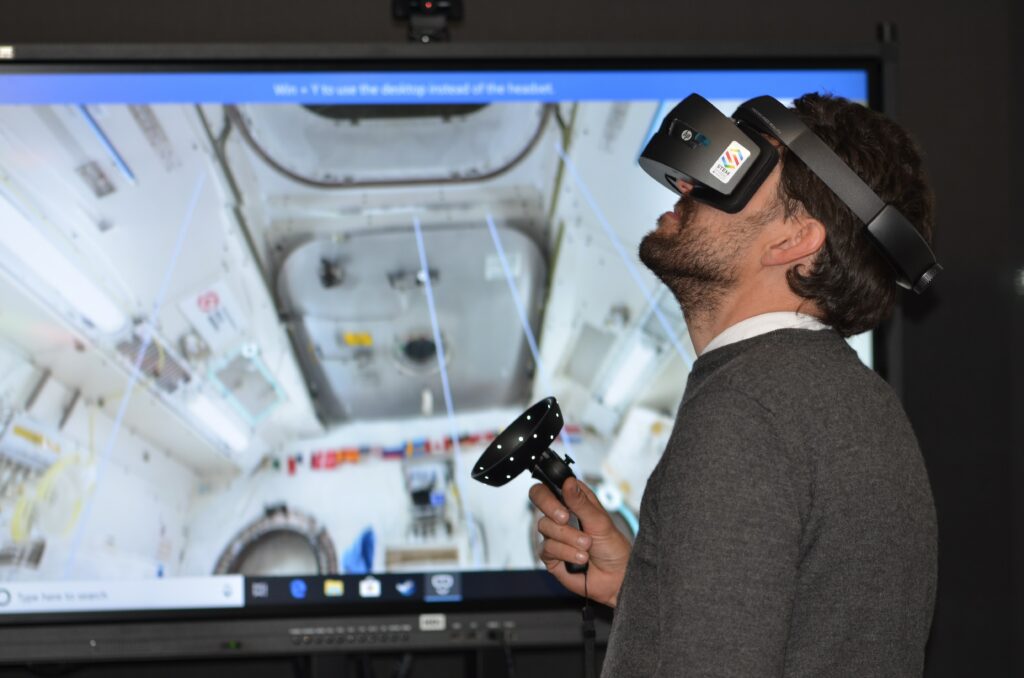Nowadays, virtual reality has almost become a buzzword due to its repeated use in headlines, discussions and various news outlets. Consequently, we have become somewhat accustomed to hearing or reading about the topic, but are we all familiar with what it actually means? This blog entry aims to clear up any uncertainties about the basic definition of virtual reality and its possible use cases.
But what exactly does the word virtual reality envelop? What is the deciding factor that makes something a “virtual reality”? For this, there are various definitions which of course more or less differ in some areas, but come to a rather decisive conclusion overall. One point that could be made for the first uses of virtual reality, which by todays standards can be considered rather humorous, is the 1896 screening of footage of a train approaching the camera directly. Back then, it caused the entire audience to jump out of the way or run out of the room in fear of getting struck by said train. While this has turned into more of an urban legend over time, a simple cinema screen can hardly be considered virtual reality today.1

The modern definition of virtual reality is much more focussing on immersion and interaction. For something to be considered VR today, it has to be a computer simulation resulting in a 3D visual (or otherwise stimulating) environment. This immerses the user in a virtual world, with a range of sensory in- and outputs, which shape the experience in real time. The more of the signals are sent, the higher the resulting immersion will be. Typically, this is achieved by a headset which covers the users eyes and plays back footage of whichever environment the user is supposed to find themselves in. The second tool is usually some form of controller or glove, which copies the users movement and allows them to interact with virtual objects. These instruments build the base for the users telepresence (the feeling of “being there”). This feeling can be expanded and reinforced though various technological means.3

This has been a very general overview of what VR means. In future posts I will dive further into the topic and provide insights into different aspects, closing in further on my own approach. Seeing the difference between those two very different worlds of what could be considered “virtual reality” at the time, while taking into accoun the reasonably short time that has passed inbetween, holds exciting possibilities for future development in this area of technology.
Sources
3. Lowood, Henry E.. “virtual reality (VR).” Encyclopedia Britannica. Last modified November 18, 2023. https://www.britannica.com/technology/virtual-reality.
1. Virtual Reality Society. “History Of Virtual Reality”. Virtual Reality Society. Accessed November 24, 2023. https://www.vrs.org.uk/virtual-reality/history.html.
Images
4. Derks, Lauren. “VR 고글을 재생하는 남자”. Unsplash. Posted March 18, 2019. https://unsplash.com/photos/man-playing-vr-goggles-bCdIx5LjrYo.
2. Grundhauser, Eric. “Did a Silent Film About a Train Really Cause Audiences to Stampede?”. Atlas Obscure. Posted November 3, 2016. https://www.vrs.org.uk/virtual-reality/history.html.